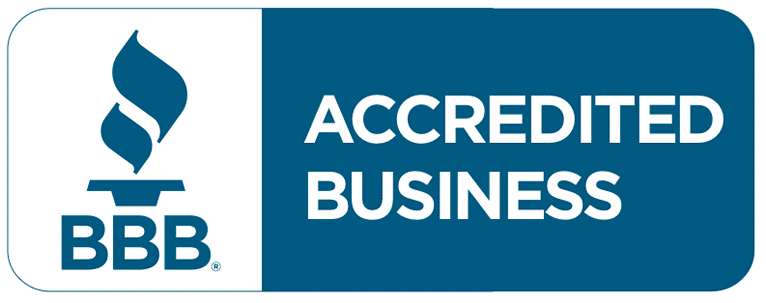When your garage door opener starts acting up, it can throw a wrench in your day, especially if you’re in a rush. But don’t worry, if you’re a proud owner of a Chamberlain garage door opener, we’ve got you covered. This easy-to-follow guide on how to perform Chamberlain garage door opener troubleshooting will save the day. In this blog, we will help you address the issues like a pro, getting your garage door back on track swiftly and securely. Let’s get started and make your home’s important entrance reliable instead of stressful.
Chamberlain Garage Door Opener Features
Garage door openers are indispensable for the smooth operation of your garage door, providing convenience and security to your home. Among the many brands available, Chamberlain stands out as a well-renowned name known for its reliability and advanced technology. But, even the most reliable equipment can run into issues. Understanding your Chamberlain garage door opener is the first step to troubleshooting like a pro.
Types of Chamberlain Garage Door Openers
Chamberlain offers a variety of garage door openers designed to meet different needs and preferences. The main types include:
- Chain Drive Openers: These are the most common and traditionally used garage door openers. They use a chain, similar to a bicycle chain, to open and close the door. Known for their durability, they tend to be noisier than other types.
- Belt Drive Openers: These operate very similarly to chain drive openers but use a belt instead of a chain, leading to quieter operation. They are ideal for homes with living spaces above or adjacent to the garage.
- Screw Drive Openers: These use a threaded steel rod to move the door. While they are less parts-intensive and thus more reliable, they can be noisier and slower than belt and chain drive openers.
- Wall Mount Openers: Also known as jackshaft openers, these are mounted on the wall beside the garage door, freeing up ceiling space and reducing noise and vibrations.
Recognizing which type of Chamberlain garage door opener you have is crucial as it dictates the troubleshooting methods you’ll use.
Common Problems with Chamberlain Garage Door Openers
Despite the high quality of Chamberlain garage door openers, users may encounter several common issues, such as:
- Door not opening or closing: This can be due to a variety of reasons, including obstructions in the path of the door, misaligned safety sensors, or issues with the opener’s settings.
- Opener not responding to remote or keypad: This often involves problems with the remote control, such as dead batteries, or issues with the opener’s programming.
- Loud noises during operation: This could indicate a mechanical problem, such as a lack of lubrication or worn-out components.
- The door reverses before hitting the floor or immediately after closing: This is usually a sign of misaligned safety sensors or sensitivity settings that need adjustment.
Being aware of these common problems can help you identify and troubleshoot issues more effectively.
Tools Needed for Chamberlain Garage Door Opener Troubleshooting
Before diving into troubleshooting your Chamberlain garage door opener, it’s essential to have the right tools at hand. While some issues can be resolved with basic tools you likely already have, other more complex problems may require specialized equipment.
Basic Tools
For most common issues, the following basic tools are sufficient:
- Screwdriver set: Useful for adjusting components and opening the opener’s cover if needed.
- Adjustable wrench: Handy for tightening or loosening bolts and nuts.
- Ladder: Necessary to reach the opener and other high components of the garage door system.
- WD-40 or a similar lubricant: Helpful for addressing problems related to stuck parts or noise.
- Multimeter: Essential for testing the electrical components and connections, ensuring they’re functioning correctly.
These tools will allow you to perform many of the basic Chamberlain garage door opener troubleshooting steps that can resolve common problems.
Optional Tools for Advanced Chamberlain Garage Door Opener Troubleshooting
For more complex issues, especially those related to the opener’s electronics or mechanical systems beyond simple fixes, the following tools might be required:
- Circuit tester: To more thoroughly check the electrical circuits and diagnose issues with the power supply.
- Sockets and a ratchet set: These can be very helpful for working with bolts and nuts that are too tight for an adjustable wrench.
- Wire strippers and crimpers: If there’s a need to repair or replace wires, these tools will be necessary for cutting and joining electrical wires.
- Garage door spring tension gauge: This specialized tool is used for checking the tension of the garage door springs, which can affect the operation of the door if not correctly balanced.
While having these tools can be beneficial, not all troubleshooting will require them. It’s often best to start with the basics and escalate your approach as needed, based on the complexity of the issue you’re facing.
In sum, understanding the different types of Chamberlain garage door openers and the common issues they encounter is the first step in effective Chamberlain garage door opener troubleshooting. Equipping yourself with the right tools, from basic household items to more specialized equipment, empowers you to address these issues directly and restore your garage door opener to its optimal condition. Keep in mind that while many problems can be resolved with DIY techniques, you shouldn’t hesitate to reach out to a professional if the issue persists or is beyond your comfort zone. Being proficient in troubleshooting doesn’t just mean fixing everything yourself—it also means knowing when to seek professional help to ensure a safe and effective solution.
Chamberlain Garage Door Opener Troubleshooting Steps
Diagnosing and fixing issues with your Chamberlain garage door opener can often be done right from your own garage, with a bit of knowledge and some elbow grease. Let’s dive into some common troubleshooting steps that can get your garage door opener up and running in no time.
Troubleshooting Remote Control Issues
When your garage door doesn’t budge with the remote control, start by checking the simplest solutions first. Replace the batteries in the remote as depleted batteries are often the culprit. If a new set of batteries doesn’t do the trick, ensure that the remote hasn’t been deprogrammed or that it’s not out of range. Reprogramming instructions can typically be found in your opener’s manual. Finally, check for possible interference from nearby electronic devices which can occasionally disrupt the signal.
Troubleshooting Sensor Problems
The safety sensors situated near the bottom of your garage door frame play a crucial role in preventing the door from closing if something (or someone) is in its path. If your door refuses to close, make sure nothing is obstructing the sensors. Additionally, check that the sensors are properly aligned – even a small misalignment can prevent proper functioning. Cleaning the sensors can also be beneficial as dirt and debris block the signal. If these steps don’t help, inspect the wires connecting the sensors for any signs of damage.
Troubleshooting Motor Malfunctions
Sometimes the heart of the matter is the motor itself. If your Chamberlain garage door opener hums or clicks but fails to open the door, the motor may be jammed or could have overheated. First, try to reset the motor by unplugging the unit for about a minute and then plugging it back in. This may also reset any tripped internal circuit breakers. If this doesn’t resolve the issue, the motor’s internal gears might be worn out, necessitating professional repair or replacement.
Troubleshooting Door Reversal Mechanism
Chamberlain garage door openers are equipped with a safety feature that causes the door to reverse if it encounters an obstruction. While this is a crucial safety mechanism, it can act up. If your door reverses for no apparent reason, check for obstructions or debris on the track. Also, inspect the springs and cables for wear and tear or damage – these parts can affect the balance of the door, triggering the reversal mechanism. Adjusting the force and limit settings on the opener can also correct unnecessary reversals but refer to your manual to avoid misadjustment.
Advanced Chamberlain Garage Door Opener Troubleshooting Techniques
For those tricky issues that basic Chamberlain garage door opener troubleshooting can’t resolve, here are some advanced techniques that might just do the trick.
Resetting the Chamberlain Garage Door Opener
When your Chamberlain garage door opener is misbehaving in ways that defy simple fixes, a full reset might be in order. To perform a reset, locate the “Learn” button on your opener’s motor unit. Press and hold this button for about six seconds until the LED goes out, effectively clearing the opener’s memory. This means you’ll need to reprogram your remote controls and keypads, so please refer to your manual for instructions. A full reset can often clear up frustrating issues with remote controls or erratic opener behavior.
Adjusting the Chain Tension
A sagging or overly tight chain can lead to numerous problems with your Chamberlain garage door opener. Signs of a chain in need of adjustment include a banging noise when the door operates or the door moving unevenly. To adjust, you’ll typically locate the adjustment mechanism on the opener rail or near the motor unit. If your chain is sagging, you’ll need to reduce the slack by turning the adjustment bolt in the direction specified in your owner’s manual. Conversely, if the chain is too tight, you’ll loosen it. It’s essential to achieve a balance where the chain is neither too tight nor too slack.
Checking for Electrical Issues
Electrical problems can manifest as intermittent or complete failure to operate. Begin by checking the power supply – ensure your opener is plugged into a working outlet and that there are no tripped circuit breakers. A faulty outlet can sometimes be the offender, requiring replacement by a qualified electrician. For openers that stop working suddenly during operation, inspect the opener’s wiring for any signs of wear, fraying, or disconnection. Loose wires can be carefully reconnected, but worn-out wiring may need replacement. Always ensure the power is turned off before performing any electrical work to avoid injury.
Chamberlain garage door openers are reliable and durable, but like all mechanical devices, they can encounter issues. Armed with these Chamberlain garage door opener troubleshooting steps and techniques, you can tackle most problems that arise, saving time and potentially costly service calls. Remember, when in doubt, consulting the owner’s manual or contacting a professional technician is always a safe bet. With a bit of patience and effort, you’ll have your garage door running smoothly again in no time.
Maintenance Tips to Prevent Future Problems of Chamberlain Garage Door Openers
Keeping your Chamberlain garage door opener in top shape is easier than you might think. By incorporating a few maintenance tips into your routine, you can prevent many common issues from cropping up. Consider this your quick guide to maintaining your opener and ensuring it operates smoothly for years to come.
Regular Lubrication
One of the simplest, yet most effective, maintenance tasks is regular lubrication. Without proper lubrication, the parts of your garage door opener can begin to wear down from friction, leading to unnecessary strain and potentially costly repairs. Once every six months, make it a habit to:
- Apply a silicone-based lubricant to the chain or screw of your opener. Avoid using WD-40 as it’s a solvent, not a lubricant, and won’t provide the long-term benefits you’re looking for.
- Lubricate the rollers, hinges, and springs of the garage door itself. This helps in ensuring the door moves smoothly, reducing the amount of work your opener has to do.
- Once you’ve applied the lubricant, make sure to open and close the door several times. This helps spread the lubricant evenly across all the moving parts.
Remember, a little bit of lubrication goes a long way in extending the life of your garage door opener and preventing wear and tear.
Inspection Checklist for Preventive Maintenance
Aside from regular lubrication, conducting a thorough inspection of your garage door opener and its surrounding components can help you catch potential issues before they become major problems. Here’s an easy-to-follow checklist to help you navigate the process:
- Visual Inspection: Once every month, visually inspect the garage door opener, the garage door, and all the visible parts for any signs of wear or damage. Look for fraying cables, broken springs, or any loose hardware.
- Test the Balance: Disconnect the opener by pulling the release handle (usually a red cord), and manually lift the door halfway up. If it doesn’t stay put, it might be unbalanced and needs adjustment. An unbalanced door puts extra strain on the opener.
- Check the Safety Features: Test the auto-reverse feature by placing a block of wood on the ground where the door would close. The door should reverse direction after coming into contact with the obstruction. Also, test the photo-eye sensors by waving an object in front of them while the door is closing. The door should reverse if the sensors are working correctly.
- Tighten Up: Vibration from the door’s operation can loosen hardware over time. Use a socket wrench to tighten up any loose bolts or nuts you find during your inspection.
- Clean the Tracks: Make sure the tracks on either side of the garage door are free from debris and buildup. You don’t need to lubricate these, but keeping them clean ensures the door runs smoothly.
By following these simple maintenance steps, you’ll help ensure your Chamberlain garage door opener works reliably and efficiently, minimizing the need for troubleshooting down the line.
Frequently Asked Questions
When it comes to troubleshooting Chamberlain garage door openers, a few questions pop up more often than others. Let’s tackle some of these to give you a better understanding of how to handle common issues.
Why won’t my Chamberlain garage door opener close the door?
This could be happening due to several reasons. First, check the safety sensors located at the bottom of the garage door tracks. If they’re misaligned or something is blocking their beam, the door won’t close as a safety precaution. Also, examine the tracks for any obstructions or damage.
My garage door opener is making noises but not moving the door. What’s going on?
If your opener is humming or buzzing but the door isn’t budging, the issue could be with the gears inside the opener unit. It’s common for these gears to wear out, especially in chain-driven models. This might require a visit from a professional for repair or replacement.
How do I reset my Chamberlain garage door opener?
Resetting your opener can resolve minor glitches and connectivity issues. To reset, simply unplug the opener from its power source, wait about a minute, and then plug it back in. For models with a backup battery, you may also need to remove the battery to ensure a complete reset.
Can I open my garage door with my phone if my opener is a Chamberlain?
Yes, if your Chamberlain opener is compatible with the myQ technology. This feature allows you to open, close, and monitor your garage door from anywhere through a smartphone app. Check your model’s specifications to see if it supports myQ and follow the setup instructions in the app.
What does it mean if the LED lights on the opener are flashing?
Flashing LED lights on your Chamberlain garage door opener are error codes indicating specific problems. The pattern of flashes can help you diagnose issues such as misaligned safety sensors, obstruction on the door path, or internal faults. Refer to your opener’s manual for a breakdown of what each pattern means.
By staying proactive with maintenance, understanding how to handle common issues, and knowing when to call in a professional, you can ensure your Chamberlain garage door opener remains a reliable, convenient part of your daily life. If problems persist after troubleshooting, consider reaching out to Chamberlain’s customer support for further guidance.
Conclusion
Wrapping up, Chamberlain garage door opener troubleshooting doesn’t have to be a daunting task. With a bit of patience and some handy DIY techniques, you can often figure out and fix the issue all by yourself. Remember to go through the steps systematically – from checking the power sources and ensuring the sensors are unobstructed to recalibrating the opener, if necessary.
















